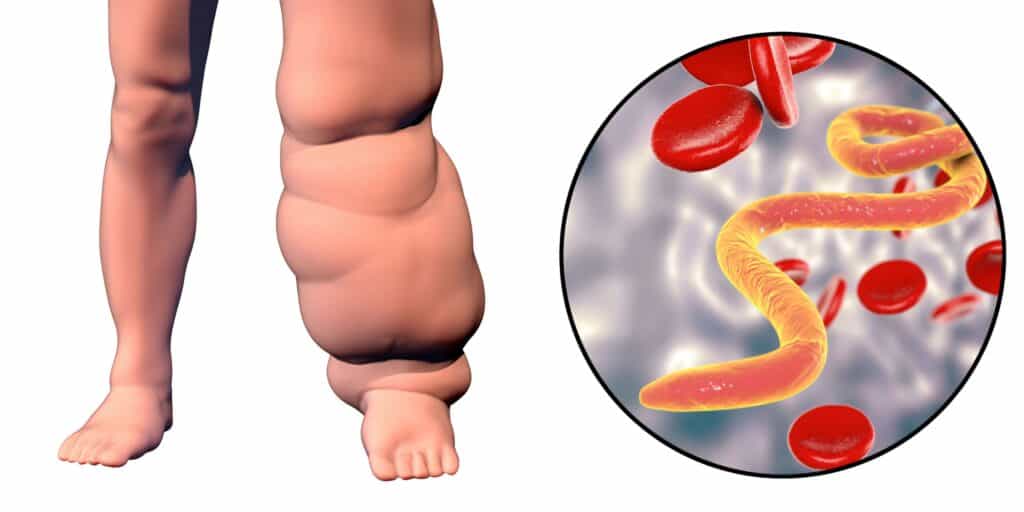Why you might need swollen leg treatment, Singapore.
WHAT IS IT?
Leg swelling may be caused by a condition known as Lymphoedema. This is a condition where swelling occurs in the body tissues due to the accumulation of lymph, which is a fluid consisting of proteins, salts, fats, white blood cells and water. Lymph circulates throughout the body in the lymphatic system which is a separate transport system from the blood vessels. Lymphoedema can affect different parts of your body, but most commonly it affects the arms and the legs.
Lymphoedema can cause significant swelling in the legs resulting in reduced mobility. You will also be at increased risk of leg infection and sepsis. Lymphoedema may also be a complication of a more severe underlying disease, some of which can be life threatening. Hence, it is important to visit a doctor for a thorough evaluation and receive appropriate swollen leg treatment. Singapore clinics can do this for you, so don’t worry!

CAUSES OF LYMPHOEDEMA
● Primary lymphoedema: This is a less common form of lymphoedema, which is caused by the absence of lymphatic channels at birth, or the failure of the lymphatic system to properly drain lymph. Swollen limbs can either be observed once the baby is born (congenital absence of lymphatics) or later in the teenage years of the person (delayed primary failure)
● Secondary lymphoedema: This type of lymphedema is usually a result of surgery, where the lymph nodes (filters of the lymphatic system) have been removed. One example is axilla lymph node clearance surgery for breast cancer.
Other possible causes of secondary lymphoedema are:
● Cancer: When cancer cells grow near lymph nodes and lymph vessels they cause the lymph node to enlarge resulting in blockage of the lymphatic vessels. When the flow and drainage of lymph are impeded, it may accumulate and result in lymphoedema.
● Radiotherapy for cancer: This may cause scarring of the lymph nodes/vessels, which reduces the flow of lymph through them. For example, radiation to the groin or pelvic lymph nodes may cause damage to the lymphatic channels in the groin/pelvic region thus resulting in lymphoedema of the leg.
● Parasites: Infection of the lymphatic vessels by parasitic worms of the family Filariodidea may cause blockage of the lymph vessels resulting in a disease known as Lymphatic filariasis. The parasite is transmitted by mosquitoes and a person can be at risk if they are bitten by a mosquito in an area where the parasite is endemic. Lymphatic filariasis can lead to swelling/lymphoedema of the limbs, scrotum, genitals and breasts. [1]
● Trauma: Crush or burn injuries or injuries from surgery can damage lymphatic vessels. Once the injury is permanent, chronic lymphoedema may develop.
● Vascular impairment: The veins in the vascular system also help to filter fluid in the body, and work simultaneously with the lymphatic system to return fluid back to the heart. The lymphatic system can compensate to drain the excess fluid in the event of vascular system drainage problems. However if left untreated, at a certain point the lymphatic system will be unable to cope with the increased amount of lymph, and accumulation/swelling (lymphoedema) occurs.
● Kidney failure: The kidney function to filter toxins and remove excessive fluid from the body. When the kidneys no longer function as they should, there will be excessive accumulation of fluid in the body which will overload the lymphatic system. This will lead to swelling/lymphoedema throughout the body.
● Cardiac impairment: Lymphatic vessels eventually drain back to the heart, and is recirculated with each heart cycle. [2] When the heart function is impaired, there is stasis of lymph in the lymphatic vessels. If left untreated, the lymphatic system may be impaired leading to lymphoedema.
RISK FACTORS
● Old age: With ageing, the lymphatic system degenerates, and it is no longer able to manage lymph as effectively as before.
● Unhealthy body weight/obesity: Excess fats place pressure on the lymphatic vessels, affecting their ability to drain lymph. [2] The adipose tissue (fats) may even result in complete obstruction of the lymphatic vessels. Therefore, people who are suffering from obesity are at a high risk of developing lymphoedema.
● Rheumatoid or psoriatic arthritis: Lymphoedema is a rare complication of these two forms of arthritis (joint inflammation disease).
SYMPTOMS
These are some of the common signs you can look out for if you suspect you have lymphoedema. Do remember to seek swollen leg treatment, Singapore, if you have any of these symptoms.
● Swelling in the legs, particularly in the toes: These are the places where the lymph first accumulates when the lymphatic system is disrupted.
● Fatigue: The difficulty in movement due to lymphoedema can place a greater physical strain on you resulting in you being easily fatigued.
● Leakage of fluid through the skin: In severe cases of lymphoedema, patients may notice leakage of lymph fluid through the skin and staining their clothes.
● Feeling stiff, difficulty with basic movement: You may feel like your normal range of motion of the joints in the affected limb has become more limited due to the swelling.
● More occurrences of infections: The swelling of the limb causes the overlying skin to be stretched and unhealthy resulting in compromise of the skin protective barrier. This results in increased susceptibility to infections and poor healing of any wounds.
● Hardening/thickening of skin (fibrosis): As lymphoedema progresses, tissue fibres begin to form under the skin, resulting in leathery hardening of the skin over time.
Other common symptoms include:
● Burning/itching feeling
● Heavy/aching feeling
● Tightening of the skin
● Chronic wounds
Should you need lymphoedema/swollen leg treatment, Singapore Vascular and Interventional Centre is always available. Feel free to book an appointment with us today! Contact details have been included below:
6694 6270 (Call)
9898 3595 (WhatsApp)
en*****@***********tr.com (Email)
